varicose veins in the legs (Varicose veins - common name) - externally visible enlargement of the trunk veins, which develops as a result of varicose veins or postthrombotic syndrome and is accompanied by a sharp violation of the venous outflow in the lower extremities.
Modern methods allow radical treatment of varicose veins without cuts and pain.
Complaints with varicose veins
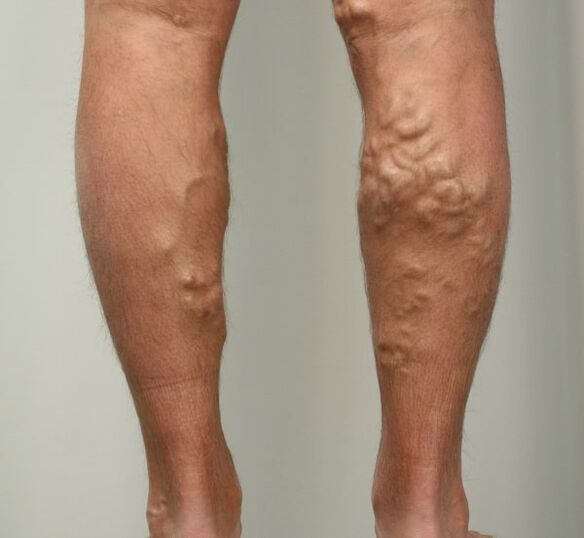
For many people, varicose veins and spider veins are just a cosmetic problem. In others, varicose veins cause excruciating pain and discomfort. Sometimes varicose veins lead to more serious problems and complications - thrombophlebitis or the appearance of trophic ulcers. Treatment consists in removing or closing deformed veins, which is the work of a phlebologist.
Varicose veins is a complete degeneration of the vein wall associated with the weakness of its connective tissue (varicose veins of the lower extremities) or develops with a sharp violation of venous outflow due to blockage or overflow of veins.
Causes of varicose veins of the lower extremities
Varicose veins of the lower extremities
The disease as the cause of varicose veins of the legs occurs in 20-40% of the population of developed countries of the world. For a long time, varicose veins are just a blemish, but the progression of the disease leads to pain, swelling in the feet and legs and, in advanced stages, to darkening of the leg skin, inflammatory changes and trophic varicose veins.
Hereditary predisposition is the main cause of primary varicose veins, however, the disease develops with excessive stress on the veins. The trigger mechanism for varicose veins of the lower extremities is severe physical overstrain, pregnancy and childbirth. In this case, there is a sharp increase in pressure in the veins of the lower extremities and damage to the valve apparatus, which triggers the mechanism for the development of the disease.
Postthrombophlebitic disease
Secondary varicose veins develop after venous thrombosis or as a result of congenital diseases (arteriovenous fistulas, congenital venous dysplasia). Postthrombotic disease is a complex progressive pathological process in the venous system of the lower extremities. Due to valvular insufficiency or deep vein occlusion, the saphenous veins dilate as they overflow with blood. Another cause can be congenital or acquired arteriovenous fistulas. Occasionally there is a congenital occlusion of deep veins, which leads to secondary varicose veins (Klippel-Trenaunay syndrome).
Complications of varicose veins
More than 40% of women and 20% of men have swollen enlarged varicose veins. In 20% of cases, varicose veins lead to the appearance of a trophic ulcer, more than 25% of patients suffer from thrombophlebitis of varicose veins. These complications often require serious treatment and represent a major health hazard.
Chronic venous insufficiency
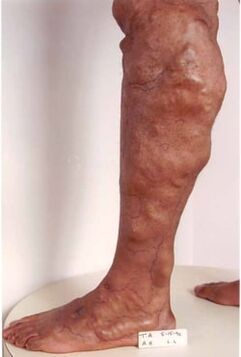
Obstruction of venous outflow causes a pathologic condition called chronic venous insufficiency. At the very beginning of the disease, the appearance of single nodes of dilated veins can be noted, which do not cause much concern, although sometimes they can hurt. Subsequently, the number of varicose veins increases. The disease progresses slowly but steadily. If the first varicose veins appeared below the knee, then the rate of development of the disease is much higher. If the disease is not stopped, the third stage of venous insufficiency gradually develops. The edema becomes permanent, a dark skin color appears in the ankle area, the heaviness in the legs constantly worries, which can persist even after a night's rest. Often develop thrombophlebitis varicose veins and skin inflammation, eczema and dermatitis. The last stage in the development of varicose veins is the appearance of trophic ulcers.
Thrombophlebitis of varicose veins
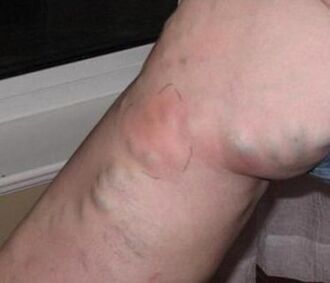
Thrombophlebitis is the most common complication of varicose veins. Thrombophlebitis is inflammation of the vein wall with the formation of blood clots in the lumen of the vein. Thrombophlebitis occurs in superficial and deep veins. In varicose veins, thrombophlebitis occurs in 25% of patients and is mostly superficial. The cause of thrombophlebitis in varicose veins is very slow blood flow, especially in large nodes. Under these conditions, all factors that increase blood clotting (pregnancy, overheating, trauma, sprains, hypothermia and scratches, acute respiratory infections) can lead to the formation of a blood clot in the varicose vein and its inflammation. Thrombophlebitis occurs in 25% of patients with varicose veins of the lower extremities. The cause of thrombophlebitis is the slowing of blood flow in varicose veins. Thrombophlebitis can progress and lead to deep vein thrombosis. Chronic venous insufficiency is a painful condition of venous drainage with varicose veins. It is characterized by edema, darkening of the skin, the appearance of trophic ulcers and varicose veins.
Varicose trophic ulcer
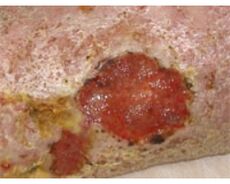
A trophic ulcer is a sign of an extreme degree of chronic venous insufficiency. This is a long-term non-healing wound that occurs with a serious violation of the venous outflow through the deep and superficial veins. It occurs in 1% of the general population and 20% of patients with venous disease. Every fifth patient with varicose veins who is not treated sooner or later gets a trophic ulcer. It can develop in both varicose veins and secondary varicose veins. Without the elimination of pathological venous outflow, a trophic varicose ulcer does not heal or constantly recurs. Trophic ulcers with varicose veins occur in most patients and cause severe suffering. With modern, minimally invasive methods, you can reliably eliminate trophic varicose ulcers without cuts and pain.
Venous thrombosis and thromboembolism
Pulmonary embolism is a serious complication of venous thrombosis. Varicose veins are an important risk factor for thrombophlebitis and deep vein thrombosis. Thromboembolism leads to the development of severe cardiac and respiratory failure with a mortality rate of over 50%.
Prevention of varicose veins of the lower extremities
Every modern person should understand what varicose veins on the legs are, how to treat and prevent their occurrence. With a hereditary predisposition, factors that contribute to varicose veins should be avoided. The use of venotonic drugs, wearing compression stockings during exercise, regular examinations by a phlebologist and ultrasound of the veins are shown.
When working in concomitant conditions, it is necessary to wear compression stockings of the 1st compression class at work, therapeutic exercise, outdoor activities, daily walks of at least 1 hour in medical stockings, foot massage and swimming. Refusal to use oral contraceptives with complicated heredity of varicose veins. It is better to adhere to these simple rules than to treat varicose veins on the legs.
Avoid the production of factors during heavy physical labor. Compression stockings are necessary for this, especially if you have a predisposition to varicose veins. Medical knitwear is indicated for all pregnant women, with a predisposition to varicose veins and thrombophlebitis, special compression stockings are worn during childbirth. It is advisable for all pregnant women in the last weeks of pregnancy to visit a phlebologist and conduct an ultrasound of the veins. This will help reduce the risk of problems with the venous system.
How to treat varicose veins in the legs
Over the past 10 years, "barbaric" methods of treating varicose veins have become a thing of the past, thanks to the advent of gentler and more effective methods that are successfully used in clinics.
Vein sclerotherapy in varicose veins
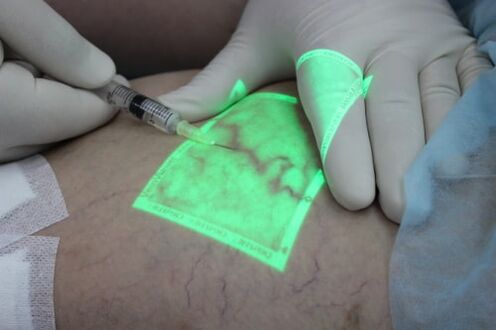
Sclerotherapy is the introduction of a drug into the lumen of a varicose vein that causes the walls to stick together and the veins to disappear. A number of chemicals are used in sclerotherapy, and there have been attempts to treat with ozone. Once upon a time, the advent of foam sclerotherapy revolutionized phlebology. For the first time, an effective method of treating varicose veins without major surgery has appeared. Currently, foam sclerotherapy is used to remove medium-diameter varicose veins after laser sclerotherapy of pathological venous discharge. Sclerotherapy is indispensable in the treatment of spider veins and reticular varicose veins, where it has no real competitors.
Treatment of varicose veins with a laser
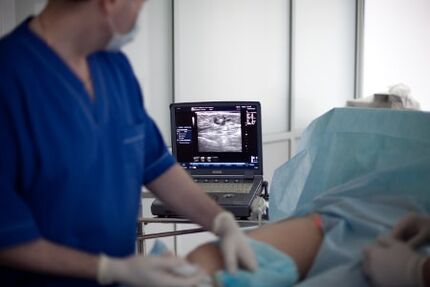
Laser treatment of varicose veins of the lower extremities (EVLT) is the most modern, radical and affordable method of treatment, which allows you to both treat varicose veins in the legs and eliminate the causes of trophic ulcers. The importance of the laser treatment lies in the thermal heating of the vein wall from the inside and the subsequent resorption of the varicose vein. The latest achievement in EVLT is a 1470 nm laser and a radial light guide, introduced into medical practice by phlebologists. The postoperative period after this technique is completely painless, and the result is superior to other treatment options - the radicality of laser intervention is at least 98%.
Surgery to remove varicose veins

The surgical treatment of varicose veins with removal of the main vein trunks is a thing of the past. The risk of complications from saphenous vein removal forced phlebologists to look for other approaches, leading to the development of laser techniques and other methods of thermal vein obliteration. However, the modification of classical phlebectomy to microphlebectomy according to Müller and Varadi made possible a wonderful combination of laser treatment and removal of large varicose veins through punctures without incisions or sutures. Varadi's technique saved patients from the painful obliteration of large varicose veins. With the miniphlebectomy you can treat leg varicose veins as well as remove visible varicose veins anywhere on the body.
Radiofrequency obliteration of varicose veins
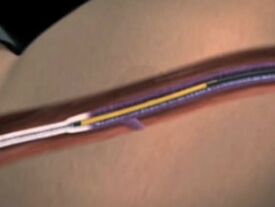
Radiofrequency obliteration (RFO) of leg varicose veins is a modern and safe treatment method. The procedure is based on the use of microwaves, which heat a metal probe that already forms the wall of the vein, causing destruction of the inner membrane. In terms of its painlessness, the procedure corresponds to laser coagulation with lasers at a wavelength of 1470 nm, is easy to carry out and postoperatively painless. However, RFO is significantly inferior to laser in terms of long-term treatment outcomes. The effectiveness of RFO is 85% without repetition. The procedure is not suitable for the treatment of perforating veins.
Massage and bath for varicose veins
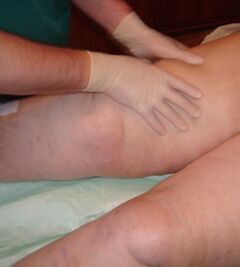
Massage is a method of actively treating varicose veins.
All types of modern massage are used, especially in the pathology of the lymphatic and venous systems. The exclusive methods include the technology of lymphatic drainage massage with bandaging, which very effectively relieves chronic venous insufficiency.
In chronic venous insufficiency, massage is used to eliminate venous hypertension in varicose veins and postthrombotic syndrome. The combination of this massage with bandages allows you to effectively get rid of all clinical manifestations of the disease.
A bath with varicose veins, thrombophlebitis or postthrombotic diseases is very dangerous. Any thermal stress can provoke the formation of blood clots in deep veins with all the ensuing consequences.
Unfortunately, it is impossible to completely cure varicose veins without eliminating venous discharge and varicose veins. Although reducing the symptoms associated with stagnation of venous blood in the legs is quite possible with the help of modern therapies. However, the prevalence of varicose veins and chronic venous insufficiency sometimes gives rise to speculation about this problem. Consider modern treatment methods and fools.
Medicines for varicose veins
The goal of drug therapy for venous pathology is to reduce symptoms and prevent complications, but these goals are not easy to achieve. Another problem arises from the wealth of means that can be used today: which one should one choose? Unfortunately, despite the theoretically justified expediency of use, most of the proposed drugs have rather low effectiveness. This is due to a number of reasons, the main of which is the low absorption of the medicinal substances of these drugs by the body. An ideal drug for the treatment of venous insufficiency should affect as many pathogenetic relationships of chronic venous insufficiency as possible, with a minimum of side effects and high absorption by the body. A fairly large number of venotonic agents are represented on the modern pharmaceutical market. However, they have similar medicinal substances (plant flavonoids) and therefore the effectiveness of one or the other depends only on the concentration and digestibility of the active substance.
You should not expect the disappearance of varicose veins from these drugs, however, lightness in the legs, a decrease in edema and the disappearance of night cramps may occur.
Creams and gels for varicose veins
Despite the high effectiveness advertised by sellers and manufacturers, creams and gels do not bring relief from varicose veins, and varicose veins do not disappear from them. At the initial stage of venous insufficiency, phlebologists do not object to the use of these funds, since their rubbing, like a light massage, promotes venous outflow and has a soothing effect on the skin. In the case of advanced venous insufficiency, these creams and ointments can cause skin inflammation and allergies and are therefore very harmful. Some drugs are used in the development of acute thrombophlebitis and help to weaken the inflammatory process, but varicose veins do not go away from them. Thanks to proper advertising, shamanic products with leeches have gained great popularity among people, but they have no attitude towards medicines and even leeches, and there is no point in expecting from them.
Medicines to treat blood clots in varicose veins
A common complication of varicose veins is thrombophlebitis, especially during pregnancy and the postpartum period. A proven drug for preventing blood clots is a low molecular weight, acidic, sulfur-containing glycosaminoglycan. To prevent thrombophlebitis after treatment of varicose veins, tablets are used in clinics. They are taken 7 days after a laser or radiofrequency intervention.
Compression stockings for varicose veins
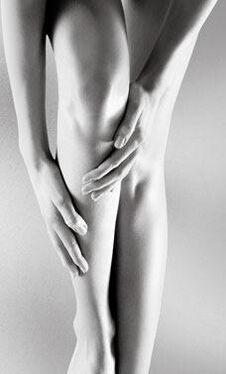
Compression stockings are undoubtedly one of the most effective ways to treat venous edema and reduce the degree of chronic venous insufficiency. Invented more than 100 years ago and gaining immense popularity in the 20th and even more so in the 21st century, compression stockings and stockings have become indispensable in phlebological treatment. This is because of the effects it has:
- improvement of venous and lymphatic drainage from the lower extremities,
- improvement of microcirculation,
- slow down the progression of the disease,
- prevention of complications of varicose veins (varicothrombophlebitis, trophic disorders),
- Prevention of deep vein thrombosis.
How to use compression stockings
So if you have varicose veins and are planning treatment, you will no doubt wear compression stockings for a period of several days or several months (individually) during treatment. If your feet are swollen towards the end of the day after work and you suffer from gravity leg syndrome, you can also wear compression stockings during the day to avoid these symptoms in the evening. Of course, if you have complications of untreated varicose veins - trophic ulcers or thrombophlebitis - you will also use compression to improve the condition of the legs and reduce unpleasant symptoms.
The fact is that by improving venous outflow, compression stockings every second of wearing help to improve the return flow of venous blood from the legs, which is undoubtedly not easy for disease-damaged veins and violates the law of universal gravitation. Compression knitwear can safely be called one of mankind's ingenious inventions, but in order for it to work for you, several conditions must be met:
- Compression knitwear is selected individually (according to the norms). The main requirement is compliance with the anatomical profile of the limb, and therefore the creation of the correct pressure gradient.
- Knitwear is selected individually by a doctor (phlebologist). Medical devices are marked in mm Hg and divided into compression classes 1, 2, 3, 4. Each compression class corresponds to a specific pressure. The appropriate compression class is used in different stages of varicose veins or chronic venous insufficiency. That is why only a doctor has the right to prescribe and select the right compression stockings - taking into account the type of pathology and by individual standards.
- It should be medical, not slimming knitwear. Only proven brands with RAL certificate.
When do you need knitwear for varicose veins?
- Correction of the syndrome of "heavy legs": reducing its severity, edema, improving the quality of life;
- during treatment with a phlebologist: after surgery or for a period prescribed by a specialist;
- to slow the progression of varicose veins;
- to treat complications of varicose veins (varicothrombophlebitis).
A necessary part of any treatment of varicose veins and chronic venous insufficiency is medical elastic compression. Thanks to compression therapy, it is possible to completely get rid of swelling and heaviness in the legs and create conditions for any type of radical treatment of varicose veins. Modern medical knitwear has a high therapeutic effect and excellent aesthetic qualities.
Elastic bandages |
Therapeutic jersey |
|---|---|
The generation of the required pressure is determined by the technique and skill of the dressing of the physician or patient |
Treatment profile and pressure level specified at manufacture according to the compression class |
The need for medical assistance in applying a bandage or educating the patient |
The doctor's involvement is limited to the selection of the compression class and the type of product |
Difficulty providing compression and fixation to the thigh |
Provides effective compression and fixation on the thigh |
Used for non-standard limb shapes |
With a non-standard shape of the limb, customization is possible |
Bandages wear out quickly due to daily washing |
Daily washing is necessary to maintain compression properties |
Must be replaced after several washes |
Guaranteed retention of compression properties for 6 months |
Possible violations of the water and temperature balance of the skin |
Porous binding ensures a normal temperature and water balance of the skin |
Low aesthetic qualities provide convenience and comfort |
High aesthetic properties, convenience and comfort in use |
Exercises and sports for varicose veins
Strength sports with varicose veins and athletics are possible after eliminating the varicose vein syndrome or in compression stockings of 2-3 compression classes. Modern treatment can return legs with varicose veins to normal, removing all the limitations.
We bring to your attention a complex of therapeutic and preventive exercises developed by leading experts. Its regular use will help reduce the manifestations of venous insufficiency in the lower extremities, slow the progression of the disease and reduce the risk of life-threatening complications.
- Relief of leg veins. Breathe deeply and evenly, lie down with your eyes closed, relax. At the same time, put a couple of pillows under your feet so that they are raised at an angle of 15-20 °
- bike exercise. Lying on your back and breathing evenly, imagine that you are riding a bicycle.
- The exercise consists of several parts and is carried out slowly and evenly. Lie on your back with your legs stretched out and take a deep breath. On an exhale, bend your right leg and bring your knee to your chest. Inhale and stretch your leg straight up. Exhale, lower it. Repeat this exercise alternately for each leg.
- Lie on your back with your arms along your body and lift your legs straight up. Rotate both feet inward and then outward at the same time.
- Bend your feet forward and backward alternately at the ankle and relax again.
- Alternately flex and flex your toes.
- Stand in one position: legs together, arms along your torso. After taking a deep breath, slowly stand on tiptoe, exhale and return to the starting position.
- Walk in place without lifting your socks off the floor.
- Vertical scissors. Lie on your back, arms along your body, breathe evenly, alternately crossing and alternating your legs.
- Lying on your back, bend your knees without lifting your feet off the floor. Put your hands on your hips. Inhale slowly and raise your head and upper body. At the same time, the hands slide to the knees. Exhale slowly and return to the starting position.
- Lying on your back, arms by your side, legs at an angle of 15-20 °, holding a small pillow between your feet. Inhale slowly, bend at the waist and tear your buttocks off the mattress. Exhale slowly and return to the starting position.
- Lie on your back, arms along your body, bend your knees and keep your feet on the floor. Exhale slowly and pull in your stomach. Inhale slowly and inflate the stomach.
- Lying on your back, legs raised at an angle of 15-20 °. Bend your right leg and bring your knee to your chest. At the same time, firmly clasp the foot with your hands. Slowly stretch your leg up. Hands, firmly gripping the leg, slide along the calf to the level of the knee. Slowly lower your leg, hands sliding down your thigh. The exercise is repeated for the other leg.
- Stand, feet together, arms by your side, inhale slowly, shoulders back, exhale slowly, relax shoulders and tilt head forward.
- Contrasting shower on the legs. Alternating hard jets of warm and cold water. 5-10 minutes for each leg.














































